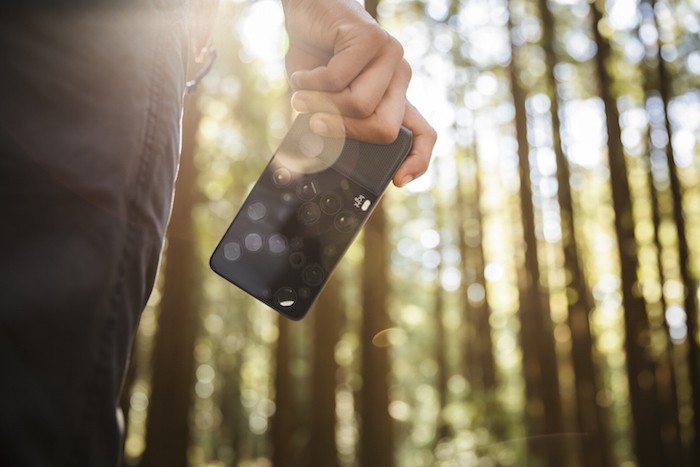
The Light L16 is the first shot at a multi-aperture computational camera with a goal of challenging DSLR image quality using a handheld device form factor.

The Light L16 features 16 camera modules inside the camera body thanks to folded optics. Depending on the shot, up to 10 of these cameras fire simultaneously to create the final image for up to a 52MP photo. Additionally, you can adjust the depth of field after the fact thanks to available data from the different cameras used.

The true depth of field flexibility (and specifically, the shallow depth of field) looks like one of the more “wow” features in terms of selling this device as a DSLR competitor (or, killer?). Getting the look and feel of a 35mm f/1.2 lens out of a device slightly larger than a smartphone is already raising some eyebrows.
The lenses combine for a 35-150mm equivalent optical zoom. The computation output results in better low-light performance with lower image noise.
[vimeo https://vimeo.com/141273968 w=700]The camera features a 5″ touchscreen display and allows you to edit images on the device. It has built-in WiFi for instant sharing and also has a built-in 128GB flash drive to handle those large image files.
[vimeo https://vimeo.com/141273851 w=700]The Light L16 is expected to ship in late summer 2016 for $1,699. It can be pre-ordered in limited quantity through November 6 for $1,299 on Light’s website.
Images courtesy: Light (http://light.co/)


I confess that this is a very intriguing concept – more so than the Lytro and even the DxO One. I might even reserve one for myself
By the time this comes out a year from now for $1,699 the iPhone 7 and other 4K smartphones will kill it’s demand. Why would anyone want to carry this around when the 4K Sony RX100 IV has a fast F1.8-2.8 24-70mm equivalent Zeiss Vario-Sonnar T* lens , EVF in a pocket size that this camera can’t match at a much lower price.
This camera isn’t aimed at the cell phone photographer. The photos in the gallery on Light’s website are from 15 x 20 inch prints. Doubling the magnification still leaves a good image. The photo of the Golden Gate Bridge would have to be HDR with a conventional camera. I suspect that the Light L 16 is pushing hard at medium format resolution and adjusting depth of field while editing is frosting on the cake..
I didn’t think I’d ever say this, but even without an EVF I would seriously consider this camera. If Light comes out with an EVF equipped model, or even an add on EVF module it would be a no brainer. An Argus C3 from a second hand store in 1964 was my first serious camera, the L 16 truly lives up to the performance implied by the name Argus. It’s an impressive achievement.